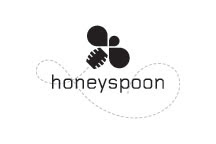
Most comic strips are character driven. Peanuts by the late great Charles Schulz is about Charlie Brown and his relationship with the other children, all recurring characters. Jim Davis's Garfield about the titular character, a cat, and his relationship with his owner and a dog. There are hundreds of examples of comic strips ranging from Winsor Mccay's Little Nemo to Aaron McGruder's Boondocks.
One of the goals of Honeyspoon is to come up with an ongoing strip. Your traditional, standard four panel comic involving dialogue would follow this set up:
1)A character presents a situation (that is relatable to your average reader) to another character. This situations is either naively misinterpreted or deemed unjustifiable for whatever reason.
2) The second character would either offer a solution or an explanation to why the situation has come about. The explanation is either correct, or ludicrous. More often then not, the second character comes off being the opposite of the first.
3) The lull: the solution is being contemplated, quietly or otherwise, or it's being put into effect.
4) The result: after trying it out or thinking about it, the first character gets a negative result. S/he either rejects the solution because it doesn't fit into the ludacris scenario s/he has painted himself in, or s/he mishandles the solution itself by not understanding it. Hilarity ensues.
Finding no need to mess with this good formula, I still wanted to do something different. The solution was instead of having recurring characters, we'd have a recurring plot. Thus
Chase Chaserton would be born.
Chase Chaserton is an ongoing chase between the main character and a purse snatcher. The chase would take them around the world, into different situations, with many different people.
The above image would be the first strip sans dialogue. If you count the first 2 panels as an extension of one it follows the formula. Chase greets a woman, and takes her politeness as a flirt. He then tries to come up with a way to get with her. The purse snatcher strikes (the solution, save the purse get the girl). Chase takes a panel to reassure her that he will get her purse back. Finally, as Chase runs into the distance, the woman thinks "What do i tell my fiance, the wedding invites were in there!" Chase's plan is a disaster waiting to happen.
Working within the strip parameters we've outlined, we believe its good, but ultimately as a weekly webcomic, we want to break those parameters and come up with something more malleable and open to design. That isn't to say you won't see this strip eventually, but right now its a project on hold.
We've come up with a new premise, but everything else is a work in progress. New strip coming soon...







